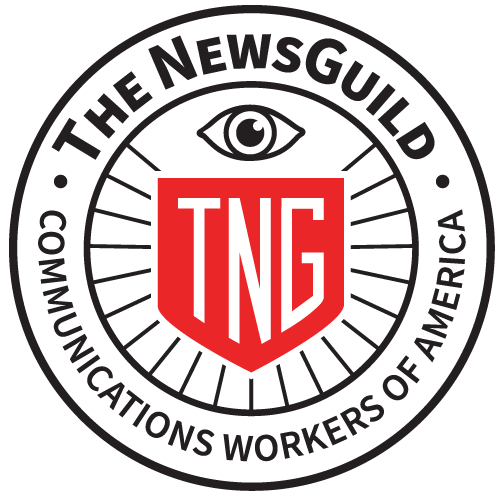Shuttering papers and turning them into weekly inserts is accelerating the rise of news deserts, researcher says
Glimmers of hope as some hedge fund owners get out of the news business
By Julie Reynolds
March 27, 2018 – It was probably Penelope Muse Abernathy who put the term news deserts into our lexicon, predicting two years ago that large swaths of the country would soon be left without a reliable local information source.
Now she’s added a new expression: Ghost newspapers.
The bleak metaphor is a reference to pared-down-to-nothing papers (or even single-page inserts) that are the remnants of once-robust local publications. And it conjures perfectly the legacy of hedge fund Alden Global Capital as it pillages the Digital First Media chain.
Now Abernathy says news deserts are on the rise, fueling concerns about the lack of watchdogs and oversight in communities large and small across the U.S.
“If you think how many papers have been merged or downsized into nothing, that leaves a hole in where people get their news,” says Abernathy, author of “The Rise of a New Media Baron,” a 2016 University of North Carolina report that described the profound impact that hedge fund ownership of newspaper chains is having on coverage.
Not only has her prediction come true, but it’s manifested in these ghost newspapers — bare-bones entities that, due to drastic downsizing, now cover a fraction of the issues they once did.
Some of the ghost newspapers are publications that have shut down and become a single page that appears once a week in a larger newspaper, miles away from the action.
“The Chapel Hill (North Carolina) weekly is now nothing but an edition — a one-page insert — of the Raleigh News Observer,” Abernathy said.
That’s exactly what happened in California to the century-old Oakland Tribune and the Contra Costa Times — along with a number of San Francisco Bay Area weeklies — after Alden took over Digital First Media.
“They’ve been downsized to ghost newspapers,” Abernathy said. “And if there’s no longer a paper that covers you, that’s a news desert.”
In 2004, “one of the last normal years,” she said, the U.S. had 8,500 daily and weekly newspapers. “We’re down to 7,000. Seventy-two dailies have been lost either through closures or mergers,” she said, adding that 1,300 weeklies have disappeared.
“That’s a lot of small towns.”
Hedge Funds Getting Out
Another development since Abernathy’s groundbreaking report two years ago is that two hedge-fund-controlled firms have now gotten out of the news business — a hopeful sign for those enduring the devastation wreaked on both newsrooms and communities by firms such as Alden.
Of the top news chains owned by private equity companies, two have liquidated entirely — Civitas, formed by Versa Capital Management, and a Western U.S. chain called 1013 Communications, which sold half of its 45 papers to Hearst Newspapers and half to private equity firms, Abernathy said. The website for Reno-based 1013 Communications has since shut down.
Together, Civitas and 1013 owned a combined total of 135 small papers, she said. “Last year, six of the top news chains were owned by these private equity firms. Now it’s four of 10.
“They didn’t make a big sale. They halved them off in geographic markets,” she added. “I think we’re going to continue to see the churn that we’ve seen. They buy ‘em and flip ‘em.”
A Return to Family Ownership?
In this turmoil, a few interesting players have emerged, giving signs of hope to those who have endured the endless cuts, asset sales and layoffs under the likes of Alden.
One rising star is Adams Publishing Group, which has been buying up small papers in Minnesota, Wisconsin, Ohio and Maryland. More recently it acquired papers from Civitas in Virginia, North Carolina and Tennessee. According to Abernathy, Adams is now the fourth-largest chain in the country, after GateHouse, Gannett and Digital First Media.
In a presentation at a publishers’ conference, Adams Publishing’s CEO Mark Adams said the company plans to keep family ownership of its newspapers, and aims to extract profits of 15 percent.
In contrast, Harvard Nieman Lab’s media analyst Ken Doctor says Alden/Digital First Media has been taking profits of 20 percent or more from its papers, principally by cutting staff and resources to subsistence levels.
According to an article about Adams on Poynter.org, one man whose family sold its newspapers to Adams is glad he stayed on to work with the new owners, saying, “These are the kind of people we want buying newspapers.”
Unlike other chains that have undergone rapid buying and selling sprees in the past two years, Digital First Media is “selling off a few pieces. But it’s still buying,” Abernathy said, referring to its recent purchase of the Boston Herald.
“As long as they can continue to get money from that, they’re not going to turn it over. It’s not worth it,” she said.
Doctor has said DFM and Alden executives believe they can continue to extract profits from their newspapers for 2-3 years before selling the remnants or shutting down.
Now a recent lawsuit by another hedge fund with a minority share in DFM papers accuses Alden of hidings its books and describes subsidiary companies of the news chain that were set up to siphon hundreds of millions of dollars into Alden’s other investments.

Abernathy has been keeping watch on how this kind of gutting affects the communities covered — or, increasingly, not covered.
“Think of how many papers have been merged or downsized into nothing, and the hole that leaves where people get their news,” she said.
Unless community-minded owners step up to buy newspapers from the hedge funds, she said, more towns will realize too late that they’ve lost their local news source.
“When the music stops, there’s not going to be any chairs left.”
Abernathy recalls running into a small town official who told her that without a newspaper editor to call and complain to, fixing online misinformation is difficult.
“How do you correct something on a Facebook page?” the town council member asked her.
“What is the answer for that?” Abernathy asks. “In an era of ‘fake news,’ I think that’s a great question. And if you don’t have someone covering those council meetings, who’s being held accountable? Especially in these smaller communities.”
Abernathy plans to release an updated news ownership report around the end of April at newspaperownership.com.
This article first appeared on www.dfmworkers.org.


